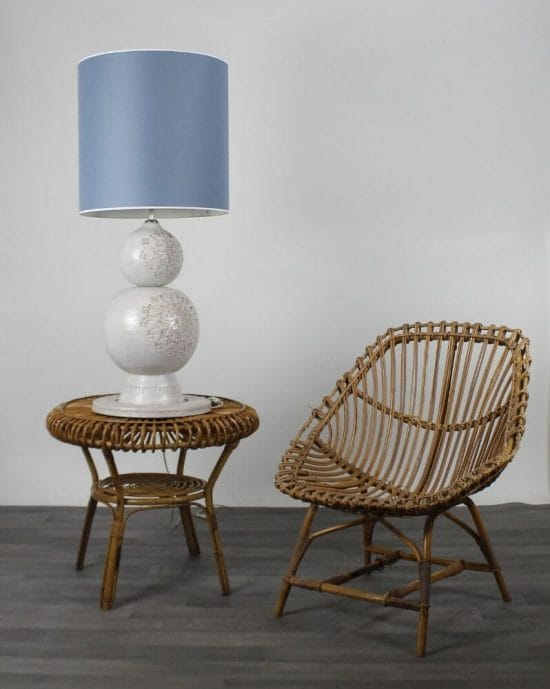NowInterviews: unparalleled Design made in Italy
A chat with Roberta Boero, Lusters – Vintage Design on the twentieth century, on the genius of Gio Ponti, on the great Italian design that directed and changed the world of furniture and which is still part of people's homes and imagination today. When they change what's this, they change CASE!
- NOWARC: Let's start with a question that we ask at the beginning of every interview, from your point of view, what is the market trend at the moment?
ROBERTA BOERO: An epochal event like the one we are experiencing has redefined or rather suspended all the activities, projects and initiatives planned for some time, in a season, spring, which sees the Italian and international market in full swing of events, exhibitions and specialized fairs . It has forced everyone to stop and reflect on the future of their business.
Personally I believe that the experience we have all had can change the perception of the environment in which we live, the home first and foremost: if previously our home could be experienced as a place of transit or rest between the thousand commitments that took us away from it, it now becomes a fundamental space for living and for many also for working.
A house therefore in which, in addition to the necessary, there is room for the comfort and beauty, evocative objects with sensorial colours, natural materials such as wood, bamboo, even small accessories, a vintage magazine rack or a 70s mirror, can give a new charm to our living space. This is why I am quite optimistic about the market recovery. The period and the unknowns about the future are undeniable but it is also true that our country has always had a vocation for antiques and beauty.
Our artistic heritage, the historic manufacturing companies, innovative and brilliant designers that the world envies us, are with us, our job is to make these excellences accessible to an increasingly wider audience.

- NOWARC: Are there any categories or periods in which you specialized and, if so, what are the reasons that pushed you in this direction?
R.B.: We specialize in mainly Italian modern design.
Our peculiarity is to offer customers an overall vision of everything that this innovative season has produced.
So not just furnishings but seating, lighting, both indoor and outdoor furnishing accessories, as well as tableware and accessories that elegantly complete all the rooms of the house. Among our customers we also frequently serve shops, showrooms and professional studios, businesses that require welcoming, refined and trendy atmospheres.
From the beginning of our activity we have been attracted by the twentieth century with its major artistic currents and in particular by the production between 1920 and 1940; it was therefore a natural evolution, with the passage of time, the period of interest expanded to the 50s and up to the 70s.
- NOWARC: In your opinion, what are the reasons that led to the great comeback that Modern Art has experienced in recent years?
R.B.: The Modernariato, with its various souls, contains a century of revolution and innovation in the furniture sector.
The best designers and industrial production have allowed the creation of quality furnishings and accessories, style and charm at affordable prices and this still means that on the market you can buy, for example, a beautiful piece of furniture of a well-known design for less than €3.000.
Even the spaces of our homes have changed; the Modernariato was originally designed for new buildings and new housing solutions.
But that's not all. What we call Modern Art, in all its forms, gives the possibility of creating a unique, personal furniture, where different styles coexist and find new life.

- NOWARC: Is there a preference in the eyes of customers between Italian and foreign twentieth century design? If so, what are the differences that make Italian Modern Art preferable?
R.B.: Italian design of the twentieth century has a leading role on the global market; Buyers from all over Europe, the United States and Russia are great admirers of our design, profound experts on the main authors in the various fields of applied arts.
Naturally, Italian design compares itself with other schools, sometimes it follows their stylistic features, but thanks to the attention to details, to the wise craftsmanship, perfect proportions and not least the fantasy (think for example of the production of Piero Fornasetti) Italian taste often turns out to be a winner.
- NOWARC: Who are, in your opinion, the major exponents of Italian design of the 20th century and what was their impact?
R.B.: There are many exponents who, with their works, renewed the style between the 50s and 70s. If we had to choose a figure who represents a reference in all fields, we cannot fail to mention the architect Gio Ponti, who since the 20s has shown an extraordinary and multifaceted talent: as director of the historic factory Richard Ginori, has been able to create, starting from classic production, a new style that is fresh, intriguing and still absolutely modern today. In the following years he expanded his fields of action, designing glass, lamps, chairs, even interiors of transatlantic liners, entire buildings and skyscrapers.
His brilliant figure created a new vision of a role, that of the designer, architect, no longer relegated to predictable sectors or fixed standards of beauty. A vision that subsequently inspired the major exponents of Italian design of the second half of the twentieth century.

- NOWARC: What is the vision of the "young" clientele, of the new generations approaching the world of furniture, towards Modern Art?
R.B.: The young clientele (we include an age group ranging from 30 to 50 years) is certainly the most interested in modern design, recognizing in it the strong versatility, which however does not affect thefunctional aspect. I like the aesthetics, clean of useless mannerisms but attentive to details, the use of materials often fine, the possibility of drawing on 30 years of experience that encompasses a style that is easy to make your own, which reflects not only your furnishing needs but your taste and personality.
- NOWARC: What is your ideal furniture, how would you compose your "dream home"?
R.B.: For me the ideal home is the home that transforms with us.
Our journey constantly enriches us with experiences, memories e new emotions, this is how I believe it should be for what surrounds us. Consequently the furniture, the colors on the walls, the accessories are not never static or belonging to a single style, but change like our tastes and needs.

- NOWARC: To conclude, after the initial reflection on the present, another question that we often purposely ask in interviews. What will necessarily have to change in the future in your work and which aspects will absolutely need to be safeguarded?
R.B.: The crisis caused by the pandemic has highlighted the critical issues of a sector that in recent years has not shown particular interest in the innovations that technology now allows. A proven system of direct sales in galleries or at market exhibitions continued to be preferred. Certainly direct contact with the customer remains fundamental, allows you to go beyond selling a piece, it is possible to establish a professional relationship confidence, reference e advice.
Yet the unimaginable happened, businesses closed, fairs and exhibitions postponed or suspended. Every professional in the sector has had to deal with new scenarios.
I believe that the support that technology can offer, especially in this sector, is the solution, not just a temporary one.
Creating sales channels extended to a wider and more international audience as well as Italian. And this applies to individual activities, but it is desirable that the entire sector forms a system and that exhibitions and events can also be "networked".
Roberta Boero – Lusters – Vintage Design















